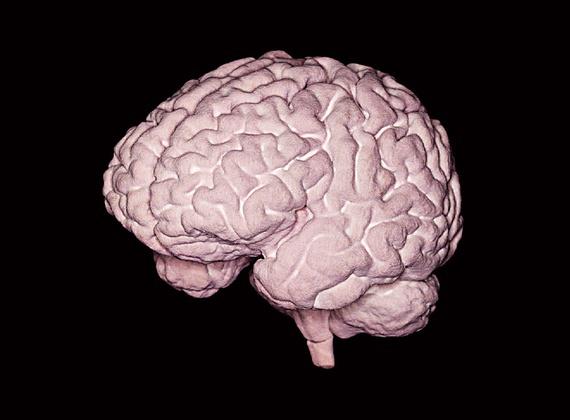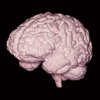A 3‐D model of a brain in the author's study. Credit: Mike Basher.
In this Atlantic feature story, neuroscientist and psychiatrist Nancy Andreasen writes about studying creativity and whether that is at all influenced by mental illness and adverse childhood experiences.
I have spent much of my career focusing on the neuroscience of mental illness, but in recent decades I’ve also focused on what we might call the science of genius, trying to discern what combination of elements tends to produce particularly creative brains. What, in short, is the essence of creativity? Over the course of my life, I’ve kept coming back to two more-specific questions: What differences in nature and nurture can explain why some people suffer from mental illness and some do not? And why are so many of the world’s most creative minds among the most afflicted? My latest study, for which I’ve been scanning the brains of some of today’s most illustrious scientists, mathematicians, artists, and writers, has come closer to answering this second question than any other research to date.
While my workshop study answered some questions, it raised others. Why does creativity run in families? What is it that gets transmitted? How much is due to nature and how much to nurture? Are writers especially prone to mood disorders because writing is an inherently lonely and introspective activity? What would I find if I studied a group of scientists instead?
These questions percolated in my mind in the weeks, months, and eventually years after the study. As I focused my research on the neurobiology of severe mental illnesses, including schizophrenia and mood disorders, studying the nature of creativity—important as the topic was and is—seemed less pressing than searching for ways to alleviate the suffering of patients stricken with these dreadful and potentially lethal brain disorders. During the 1980s, new neuroimaging techniques gave researchers the ability to study patients’ brains directly, an approach I began using to answer questions about how and why the structure and functional activity of the brain is disrupted in some people with serious mental illnesses.
One of the most personal and sometimes painful parts of the interview is when I ask about mental illness in subjects’ families as well as in their own lives. They’ve told me about such childhood experiences as having a mother commit suicide or watching ugly outbreaks of violence between two alcoholic parents, and the pain and scars that these experiences have inflicted. (Two of the 13 creative subjects in my current study have lost a parent to suicide—a rate many times that of the general U.S. population.) Talking with those subjects who have suffered from a mental illness themselves, I hear about how it has affected their work and how they have learned to cope.
http://www.theatlantic.com/features/archive/2014/06/secrets-of-the-creative-brain/372299/




Comments (0)